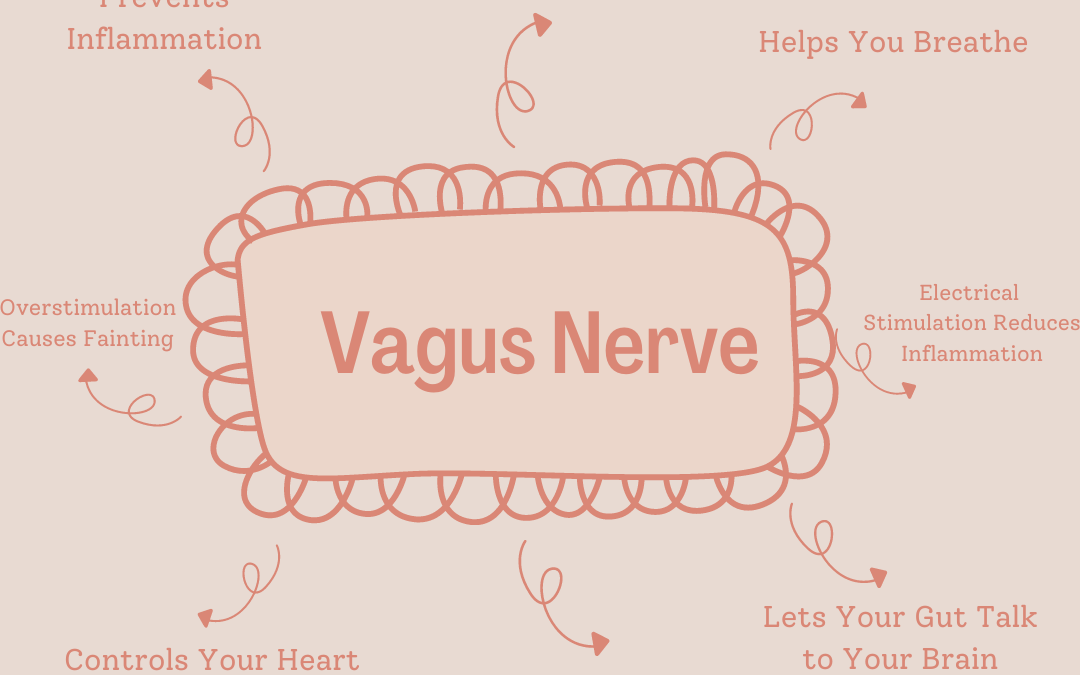
by Dr. Katherine | Aug 4, 2022 | biohacks, Chiropractic, Health, Uncategorized, wellness

This month’s biohack is the Vagus nerve. The vagus nerve gets its name because it “wanders” like a vagabond around your whole body, sending out sensory fibers from your brainstem to your visceral organs. Chiropractors and chiropractic care has long understood the incredible benefits of this remarkable nerve that effects EVERYTHING! This month I want to give our patients at Desert Valley Chiropractic a basic understanding of how this nerve works as your human reset button, how your chiropractic adjustments help to stimulate this amazing process and how you can use as few simple exercises to stimulate your vagus nerve and tap into this amazing internal system.
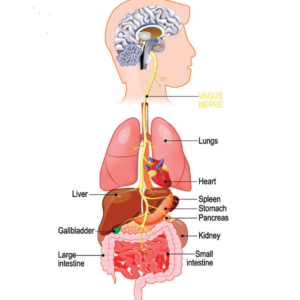
Fight or Flight, what is it and how does it effect our body? When we experience sudden, high stress, we activate our fight or flight response, getting the body ready to either flee the scene or fight. In most of our everyday experience, there is no place to run or hide, and the stressful situation is not one that can easily be fought off. Most of us are not meeting lions and tigers in the street! Most modern stressors are “man made” for example traffic, deadlines, and verbal confrontations, yet still produce that same primitive fight or flight response.
During periods of chronic high stress, the body stays in high gear, with stress hormones like adrenaline and cortisol surging through the body. This creates wear and tear on the body and mind, and over time can create a multitude of health problems such as chronic pain, gut inflammation, anxiety, mood swings, and more.
The good news is that our bodies contain their own reset button that can assist with decreasing our fight or flight response.
Your vagus nerve is one of the cranial nerves that connects the brain to the body. The vagus nerve is a major part of how our bodies and brain’s function; without it, our bodies wouldn’t be able to do basic tasks, and by stimulating it we can receive powerful health benefits. The vagus nerve, is the longest of the cranial nerves, and controls your inner rest and relax nerve center, the parasympathetic nervous system. The vagus nerve acts to counterbalance the fight or flight system and can trigger a relaxation response in our body.
Perhaps the greatest significance of the vagus nerve is that it is the body’s major parasympathetic nerve, supplying parasympathetic fibers to all the major organs of the head, neck, chest, and abdomen. The parasympathetic system is the rest and repose system it works opposite to the fight or flight system and allows our bodies to heal, repair and digest.
While there are actually two vagus nerves (the left and the right), doctors usually refer to them together as “the vagus nerve.” It originates in the brain stem and extends down through the neck and into the chest and abdomen. The vagus nerve helps to regulate many critical aspects of human physiology, including the heart rate, blood pressure, sweating, digestion, the gag reflex and even speaking. It carries both motor and sensory information, and it supplies innervation to the heart, major blood vessels, airways, lungs, esophagus, stomach, and intestines. The vagus nerve helps control several muscles of the throat and voice box. It plays a major role in regulating the heart rate and keeping the gastrointestinal tract in working order it also helps regulate vascular tone and control blood pressure. The vagus nerves also carry sensory information from the internal organs back to the brain.
Recent research has revealed that it may also be the missing link to treating chronic inflammation, and the beginning of an exciting new field of treatment for serious, incurable diseases. Here are eight facts about this powerful nerve bundle.
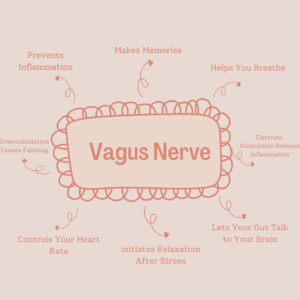
1. The vagus nerve prevents inflammation.
A certain amount of inflammation after injury or illness is normal but an overabundance is linked to many diseases and conditions, from sepsis to autoimmune conditions. The vagus nerve operates a vast network of fibers stationed like spies around all your organs. When it gets a signal for developing inflammation—the presence of cytokines or a substance called tumor necrosis factor (TNF)—it alerts the brain and draws out anti-inflammatory neurotransmitters that regulate the body’s immune response.
2. The vagus nerve helps you make memories.
A University of Virginia study in rats showed that stimulating their vagus nerves strengthened their memory. The action released the neurotransmitter norepinephrine into the amygdala, which consolidated memories. Related studies were done in humans, suggesting promising treatments for conditions like Alzheimer’s disease.
3. The vagus nerve helps you breathe.
The neurotransmitter acetylcholine, elicited by the vagus nerve, tells your lungs to breathe. It’s one of the reasons that Botox—often used cosmetically—can be potentially dangerous, because it interrupts your acetylcholine production. You can, however, also stimulate your vagus nerve by doing abdominal breathing or holding your breath for four to eight counts.
4. The vagus nerve controls your heart rate.
The vagus nerve is responsible for controlling the heart rate via electrical impulses to specialized muscle tissue—the heart’s natural pacemaker—in the right atrium, where acetylcholine release slows the pulse. By measuring the time between your individual heart beats, and then plotting this on a chart over time, doctors can determine your heart rate variability, or HRV. This data can offer clues about the resilience of your heart and vagus nerve.
5. The vagus nerve initiates relaxation after stress.
When your ever-vigilant sympathetic nervous system revs up the fight or flight responses—pouring the stress hormone cortisol and adrenaline into your body—the vagus nerve tells your body to relax by releasing acetylcholine. The vagus nerve’s tendrils extend to many organs, acting like fiber-optic cables that send instructions to release enzymes and proteins like prolactin, vasopressin, and oxytocin, which calm you down. People with a stronger vagus response may be more likely to recover more quickly after stress, injury, or illness.
6. The vagus nerve lets your gut “talk” to your brain.
Your gut uses the vagus nerve like a walkie talkie to tell your brain how you’re feeling via electric impulses called “action potentials.” Your gut feelings are very real.
7. Overstimulation of the vagus nerve is the most common cause of fainting.
If you tremble or get queasy at the sight of blood or while getting a flu shot, you’re not weak. You’re experiencing “vagal syncope.” Your body, responding to stress, overstimulates the vagus nerve, causing your blood pressure and heart rate to drop. During extreme syncope, blood flow is restricted to your brain, and you lose consciousness.
8. Electrical stimulation of the vagus nerve reduces inflammation and might stop it altogether.
Neurosurgeon Kevin Tracey was the first to show that stimulating the vagus nerve can significantly reduce inflammation. Results on rats were so successful, he reproduced the experiment in humans with stunning results. The creation of implants to stimulate the vagus nerve via electronic implants showed a drastic reduction, and even remission, in rheumatoid arthritis (which has no known cure and is often treated with toxic drugs), hemorrhagic shock, and other equally serious inflammatory syndromes.
How to stimulate the vagus nerve
Cold showers
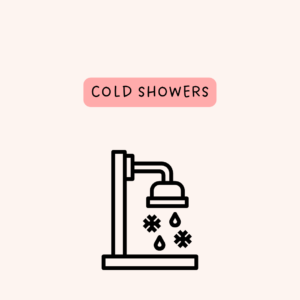
As our body adjusts to cold temperatures the vagus nerve is activated to reduce our sympathetic stress response and increase our parasympathetic rest and relaxation state. In addition to strengthening the vagus nerve it has the additional benefits of increasing lymph flow, which removes toxins, bacteria, viruses and other waste products from the body. Cold causes the heart to pump more efficiently to increase blood flow and deliver more oxygen and nutrients to the body. Cold also speeds up our metabolism, which boosts the immune system.
Humming and singing
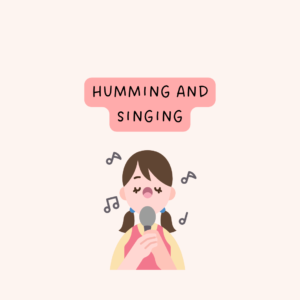
Humming, singing or chanting activates the vocal cords, which the vagus nerve passes through. The vibration of the vocal cords stimulates the nerve helping to strengthen its connection to our parasympathetic system.
Gargling
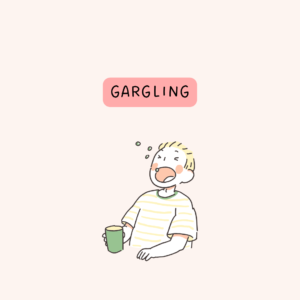
Gargling activates the muscles at the back of the throat, which the vagus nerve runs through. Stimulating and working the muscles makes the nerve fire just like when we exercise our bodies these exercises strengthen our vagal tone and improve our health.
Gag reflex
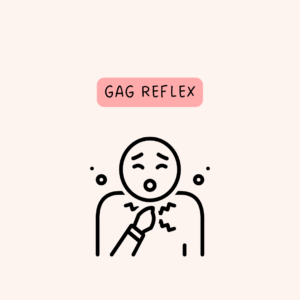
When you gag, you’re activating the throat muscles that are connected to the vagus nerve. In fact, doctors use the gag reflex as a way to tell if your vagus nerve is working optimally. If the reflex is missing or weak on either side, it could signal vagus nerve dysfunction.
Deep breathing and meditation

As we breath we stimulate the sympathetic nervous system when we inhale, while exhaling we stimulate the parasympathetic system and our relaxation response. Breathing exercises are one of the best vagus nerve exercises for digestion. Performing deep breathing exercises for 1 minute before eating activates the parasympathetic nervous system producing an increase in digestive enzymes which optimizes our digestion and the amount of nutrients, we get from the food we consume.
Exercise
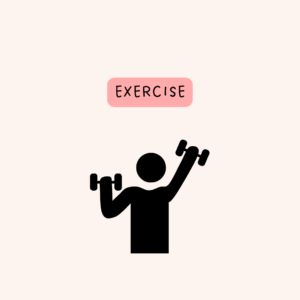
Working out and getting your body moving can affect your vagus nerve, research shows. Interval training and endurance training can increase your vagus nerve activity and improve your heart rate variability. Exercise, especially activities that get your heart rate up, offer a great way to tone your vagus nerve brisk walking, weightlifting , swimming, or cardio training are great. Cardio training is one of the best methods for vagus nerve stimulation because it requires you to work to control your breathing. However, take care not to over train. A small 2022 study found that particularly grueling workouts, like too much high-intensity interval training (HIIT), can put a lot of stress on your vagus nerve. Make it a point to incorporate breathwork and cooldowns into your workouts.
Chiropractic adjustments

Our favorite!! New research from 2018 shows that a chiropractic adjustment improves heart rate variability by boosting the health function of the vagus nerve. An improvement in the vagus nerve activity plays a major role in regulating autonomic nervous system function, lowering chronic disease risk, and decreasing mortality rates. If there is dysfunction in the joints of the spine that creates tension and inflammation at the brainstem or at various levels of the spinal cord, our nervous system, including the vagus nerve, can be impaired. Getting chiropractic adjustments will relieve the tension and reduce the inflammation around the joint and nerve setting the body up to function optimally. Those who seek chiropractic care are better equipped to deal with the common stresses that put our nervous system on edge or on overdrive.
A great morning routine to put some of these exercises into your day is do a 20- 30-minute workout focusing on your breathing and ending with 1-2 minutes of breathing exercises during your cool down. Hum or sing while you are in the shower and finish your shower off with a cold-water rinse. While brushing your teeth lightly stimulate your gag reflex on each side after gargle with a mouth rinse. Then come and see us for an adjustment!

by Dr. Katherine | Jun 21, 2022 | Chiropractic, Health, Uncategorized

Good food is so important to good health. Our bodies use the components of the food we eat for energy and metabolism as well as to repair and heal. This is why it is important to give the body good food to work with. Good organic food and cleaning up your diet is an excellent compliment to your chiropractic care as it helps to reduce inflammation in the body and helps you to heal more efficiently. Think of it like buying good building materials for a home project! If you use cheap fake products the project will fall apart with any wear and tear, need more repairs and not last as long, your body is the same!
As I started to work on this month’s biohack I realized my biggest struggle was going to be how much information there is out there on food and how it impacts our health and our communities as well. What and how we eat may be one of the biggest ways to address our health and longevity. Yet part of the problem is just HOW MUCH information is out there. With so many terms being common in today’s health-conscious culture, like “gluten free,” “all-natural,” “no-additives,” etc., it can be tough to determine what they all mean. In an effort to narrow down this vast topic I decided to focus on discussing organic food, some of the benefits to eating organic and the difference between the labels USDA ORGANIC and NON-GMO.
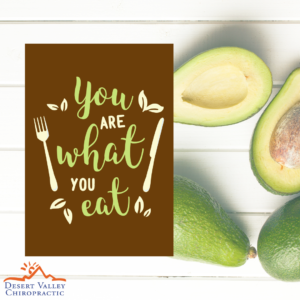
Food and what we eat is very important to many of our Desert Valley Chiropractic patients and ourselves as a family. However so is how and where we spend our money! Family farms are small business and by supporting them we are creating a demand for what is often a better quality and more humane food system. We are also keeping our dollars working to better our local economy. This is another reason we like to shop organic and local when we can. One of our favorites is the Uptown Farmers market in Central Phoenix, there are a variety of vendors there selling local organic produce. Budgeting and how we spend our money is also where the labeling system can come into play, many of us are willing to pay that little extra when it means we are feeding our families better food that leads to better health. Good food can be expensive, but the sick care side of the healthcare system is even more expensive! However sometimes we just end up over paying for a product that has used their label as a marketing tool more than a true reflection of quality ingredients.
When you’re comparing products at the grocery store, you might be wondering—what’s the difference between these two labels, and what do they mean in terms of GMO avoidance and eating organic? Here’s a general overview of the two labels and their verification processes
What Does Organic Mean?

Organic food is produced without the use of chemical pesticides or fertilizers. Pesticides include insecticides, herbicides, and fertilizers. The use of insecticides and herbicides reduce weeds and insects in crops fertilizers are used to enhance soil nutrients where they may be lacking. Organic agriculture aims to cycle resources to promote ecological balance and preserve biodiversity. Many studies show that organically gown produce contains higher nutrient profiles than conventional counterparts. This is largely due to soil conditions Prior to World War II agriculture followed the principles we now call organic. Many insecticides were neurotoxins developed from the same nerve gases used in WWII. This is why they are so toxic to handle and require special garments and equipment. These pesticides are also toxic enough that there are guidelines regarding when they can be sprayed in relation to harvest. These toxins and their residue becomes a whole health topic to its self that I encourage you to learn more about!

The National Organic Program is regulated by the United States Department of Agriculture (USDA). Their organic certification is a process-based certification that requires farmers and producers to follow approved methods in order to achieve organic certification. GMOs are prohibited from certified organic products, which means farmers are not allowed to grow produce from GMO seeds, their animals can’t eat GMO feed, and organic food producers can’t use GMO ingredients. There are differing degrees of organic certification. Some foods may be 100% organic, while other foods may just be made with organic ingredients. Either way, the basic definition of organic means there has been no chemical or artificial ingredients used in the production of the food, including pesticides, antibiotics, growth hormones, or fertilizers. Organic is also usually non-GMO as well, although there some loopholes that can compromise a food’s non-GMO status. Generally, when you purchase food with a USDA Certified Organic label , it means that food is 95-100% organic, with ingredients free of well-known contaminants and hormones. It also means that in order for a company to use that USDA certified organic label, they must undergo annual third party inspections and reviews, along with residue testing if inspectors feel the situation warrants it. That’s not to say that there aren’t some problems with organic labeling. Some foods labeled organic still contain hidden additives that aren’t organic material. Always do your homework when you can before making decisions that could affect your health.
What Does Non GMO Mean?
 GMO refers to an organism or food product that has been genetically modified. In other words, it did not develop naturally. When a food claims non-GMO status, they are basically saying they didn’t use ingredients that were genetically modified and it doesn’t come from livestock that have been fed genetically modified foods. The Non-GMO Project is a non-profit organization that independently offers GMO test verification and labeling for non-GMO products. Their verification is process-based, using traceability, segregation, and testing to ensure compliance with their standards. Companies looking to receive the Non-GMO Project stamp must follow the project’s standards of best practices and have product testing conducted at various stages of production, anywhere from the field to the packaging facility.
GMO refers to an organism or food product that has been genetically modified. In other words, it did not develop naturally. When a food claims non-GMO status, they are basically saying they didn’t use ingredients that were genetically modified and it doesn’t come from livestock that have been fed genetically modified foods. The Non-GMO Project is a non-profit organization that independently offers GMO test verification and labeling for non-GMO products. Their verification is process-based, using traceability, segregation, and testing to ensure compliance with their standards. Companies looking to receive the Non-GMO Project stamp must follow the project’s standards of best practices and have product testing conducted at various stages of production, anywhere from the field to the packaging facility.
Despite their inspection process, the project can’t legally claim products to be “GMO free” because the contamination risks to seeds, crops, and ingredients are too high. However, they’re the only organization offering independent verification of testing for GMO products in the US and Canada. However, when you see products like water, which has no genetic material, is labeled “non-GMO,” that should raise a red flag so that you look a little more deeply at what you’re actually purchasing or more importantly being marketed to buy. Additionally, the Non-GMO Project Verified label doesn’t mean there are absolutely no GMOs present. It means companies have submitted to the Non-GMO Project’s standards and have undergone their testing requirements, but there are still limits to those tests. Products labeled non-GMO could still have up to 0.9 percent genetically modified material.

The biggest takeaway you need to know between organic foods and non-GMO foods is that organic foods are almost always also non-GMO. Almost always, not always. Look for labels that state 100% USDA certified organic if you want to be as sure as possible. However, the same thing cannot be said for non-GMO foods. They are definitely not always organic. Also, there are many companies who use non-GMO labels in a way that is misleading. Simply saying something is non-GMO doesn’t make it so. It doesn’t necessarily mean the company isn’t being truthful, but obtaining the necessary certifications can be cost-prohibitive, especially for smaller companies. So, sometimes companies will put something on a label that isn’t necessarily certified.
 Since you can’t be sure non-GMO foods are always organic, it’s a much safer bet to shop organic. Then you can be reasonably certain that most of your organic foods will also be free of GMOs as well. Look for the USDA Certified Organic label it is a little green-and-white label stating USDA Organic. When shopping, that’s the label you should look for. Moral of the story? Yes, organic usually means non-GMO. But be careful, because non-GMO does not always mean organic. Shop wisely.
Since you can’t be sure non-GMO foods are always organic, it’s a much safer bet to shop organic. Then you can be reasonably certain that most of your organic foods will also be free of GMOs as well. Look for the USDA Certified Organic label it is a little green-and-white label stating USDA Organic. When shopping, that’s the label you should look for. Moral of the story? Yes, organic usually means non-GMO. But be careful, because non-GMO does not always mean organic. Shop wisely.

by Dr. Katherine | May 24, 2022 | biohacks
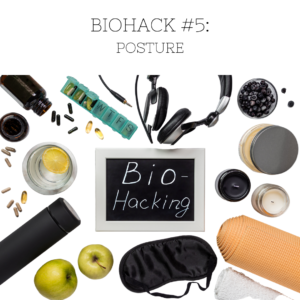
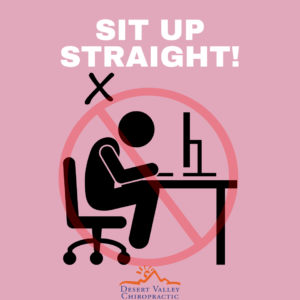
Biohacking your posture for a better appearance and health!
We all recognize the un-esthetic aspect of bad posture. Occasionally catching your self in the mirror after a long day and seeing that forward head and slumped shoulders is often enough to remind us to stand up straight get our shoulders back and our heads up…….. at least for a moment! But the poor esthetics of bad posture is not all there is to worry about. Over time poor posture takes a serious toll on your spine, shoulders, hips and knees. This series of structural flaws can lead to back pain and joint pain, which of course is one of our main concerns at Desert Valley Chiropractic. It can also lead to reduced flexibility and poorly working muscles which can limit your ability to build muscle and burn fat. Worst of all bad posture can lead to nerve constriction as the spine begins to change shape and loose its natural and beneficial curves in place of ones that are too rounded or too flat as a response to the muscle patterns of bad posture. As Dr. Katherine discussed in our chiropractic biohack The Life Changing Magic Of Chiropractic Care! These nerve impingements and the surrounding inflammation can lead to poor function through out the body including our organs and glands as well as muscles. Therefore by taking some simple steps to improve your posture you can also improve your health and that is why posture exercises are this months biohack!

We are sitting and looking at down more than EVER these days and it is taking a real toll on our posture. We have many people come to Desert Valley Chiropractic and mention they are concerned about their posture. We have many more come in complaining of the symptoms of bad posture, such as knots in the neck and shoulders, headaches, feeling like their head is heavy, without realizing bad posture is one of the roots of their symptoms.
Poor posture is most easily recognized by a forward head posture and rounded shoulders. This is becoming an increasing issue especially in young people who are developing their spines and muscles while looking down at screens and devises for hours on end! Forward head refers to the position of your head relative to your shoulders. It means if we look at you from the side your ear would be in front of the tip of your shoulder. This leads to rounding of your shoulders and an increased hump in the upper back. Pro longed time in this posture leads to a shortening of the muscles in the front of your chest and shoulders. In this position you must increase the muscle activity in your neck and upper shoulders

When you stand up straight you want your profile or sideview to look tall and straight.
- Your ear should be over your shoulder
- Your chest and sternum should be pointed up
- Your shoulder blades should be back and down from your ears
This position balances the weight of your head on your neck and minimizes the amount your muscles have to work to hold your head up.
Ok so bad posture does not look nice but how does bad posture affect your health and wellness?
Good posture reduces the amount of spasm irritation and inflammation we see in the neck and back muscles, and that reduces the amount of joint misalignment we see in your spine leading to pain, pinched nerves headaches and knots. Bad posture reduces the natural curves in your spine this reduces your body’s ability to function optimally effecting muscle function and other joints in the body as well. Severe curving of the spine and its effects on the nerves can begin to effect organ function and overall health.
What are some ways to fix it?
Poor posture is the result of muscles that have adapted in a not great way to stresses and positions they have been put into. Forward head posture often comes from the muscles in the front of your chest and the front of your neck are too tight, meanwhile the muscles in the back of your neck and upper back are stretched out, weak and not firing the way they should be. So we want to reverse this by:
Getting adjusted to take down the pain and inflammation in those muscles and around the nerve roots
Stretching the muscles in the front of the chest and neck
Strengthening and stabilizing the muscles in the upper back and back of the neck
Here are some of our favorite simple posture exercises
Door way stretches
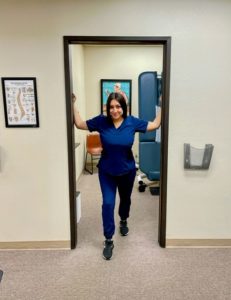
Place your hands high on either side of a door frame
Put one foot into the doorway
While maintaining good posture put your weight onto the foot in front until a stretch is felt across your chest and shoulders
Hold for 15 seconds
The use your hands and apply light pressure to the door frame for about 5 seconds
Now relax the pressure you had on the door frame and drop a bit further into the chest stretch
Hold there for 15 seconds
The use your hands and apply light pressure to the door frame for about 5 seconds
You should be able to drop a little further into the stretch again
Repeat this 3-5 x
Ball sit
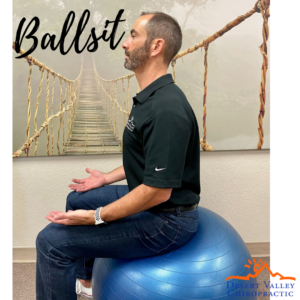
Sit on a fit ball making sure your feet are not up against the ball
Turn your hands so your palms face up
Squeeze your shoulder blades down and back
Draw your head and neck back so your ear lobe is over your shoulder
Now hold this position for 3-5 minutes
Tip for buying a fit ball:
Towel Roll
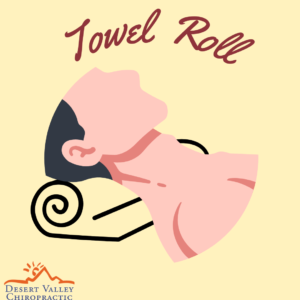
Take a hand towel and roll it up
Lay down and place the rolled towel behind your neck
Hold this position for 3-10 minutes gradually working up in time ie 3 min , 5 min, 10 min
If the towel exercise helps you may benefit from a devise that we like called a posture pump which is available on amazon
https://www.amazon.com/Posture-Pump%AE-1400-D-Dual-Hydrator%AE/dp/B00SA5IPK4/ref=sr_1_1_sspa?crid=304WX7DMH9UOW&keywords=posture+pump&qid=1652982323&sprefix=posture+pump,aps,141&sr=8-1-spons&psc=1
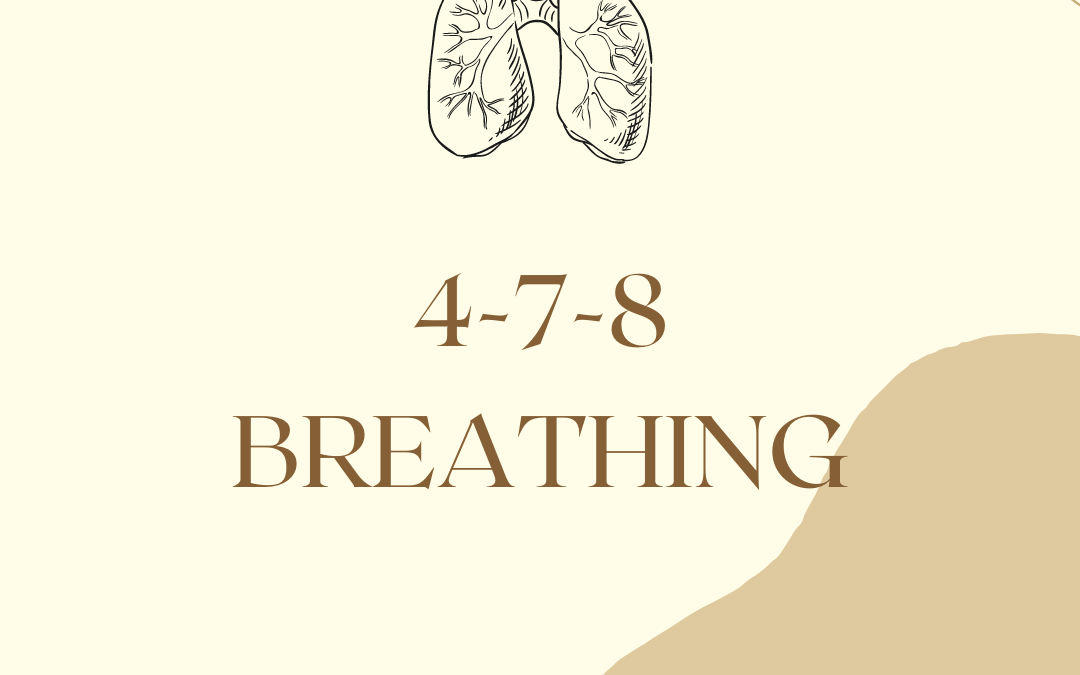
by Dr. Katherine | Apr 21, 2022 | Chiropractic, Health
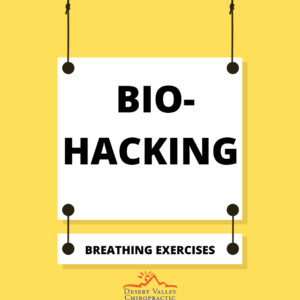
Hack Your Way to Better Health
We are on our fourth biohack of the year this month! So far we have discussed the concept of biohacking itself, the importance of knowing your vitamin D levels and maintaining them, chiropractic care and how it relates to increased health and vitality and this month we will discuss breathing exercises and learning to control our breathing for improved health. My goal as your chiropractor is to bring to our patients at Desert Valley Chiropractic and our North Phoenix community simple inexpensive ways to improve their health and feel a sense of empowerment over their healthcare journey.
Learn to Control Your Breath
Learning to control your breathing is a very important biohack that can help with everything from increased lung capacity, leading to better exercise capacity and longevity, to controlling pain and anxiety. Did you know that even your lungs need exercise to stay healthy and for your body to function normally? Your body needs oxygen for survival. Every activity in the body is dependent on oxygen, including the metabolic functioning of cells. The lungs perform the task of delivering oxygen to every part of the body. By practicing a few exercises regularly, you can train your lungs to increase their capacity, which will help you inhale more oxygen. This will, in turn, protect the body from various breathing disorders, help increase stamina, and ensure every part of the body gets adequate oxygen. Breathing is not just a necessity of life—it also has an array of positive effects on our body, mind, and spirit.

When we breathe deeply and mindfully, our breath can create profound physiological effects that we’re only beginning to appreciate with the rise of yoga, meditation, and other breathwork practices in the last few decades. Chiropractic care compliments yoga and mediation practices as we also focus on alignment and balance. Your chiropractic adjustments assist in healthy breathing by reducing tension and inflammation allowing the vertebra in your mid back to align, your ribs and the muscles in your neck to all work together to assist in better breathing.
So, scroll down and check out these super-efficient exercises to increase your lung capacity.
Breathing Exercises
These exercises are not meant to diagnosis or treat any other condition If you are not feeling well please seek medical attention. Also if you have an existing lung condition get clearance from your lung doctor (pulmonologist) before you begin these.
Better Breathing Tip: It’s normal to hold your shoulders tense and high. Before starting any breathing technique, take a minute to drop your shoulders down, close your eyes, inhale, exhale and relax.
Number One is Belly Breathing
Inhale through the nose push your belly out.
This is the exact opposite movement of sucking it in! Now breath out through the mouth and pull your stomach in while pushing your breath out.
To do belly breathing:
- Place one hand on your abdomen. Place one hand on your upper chest.
- Focus your breathing on your abdomen.
- As you breathe in, the hand on your abdomen should rise.
- As you breathe out, the hand on your abdomen should lower.
- Breathe in through the nose. Breathe out slowly through pursed lips.
- Start by doing it while lying on your back. Then try it while sitting. Then try it while standing. Finally, try it while doing an activity.
Learning to belly breath is the foundation for good breathing practice.

Number Two is Pursed Lips Breathing
Pursed lip breathing helps control shortness of breath , and provides a quick and easy way to slow your breathing. This helps to manage stress, anxiety and pain. During a panic attack, taking rapid breaths can lead to a faster heart rate, dizziness, muscle tension, and other symptoms. These symptoms may, in turn, contribute to even more anxiety.
This should feel like smelling flowers and blowing out candles.
To do pursed lips breathing:
- Breathe in through your nose (as if you are smelling something) for about 2 seconds.
- Pucker your lips like you’re getting ready to blow out candles on a birthday cake.
- Breathe out very slowly through pursed-lips, two times longer than you breathed in.
- Work towards increasing your times
- 2 seconds in : 4 seconds out
- 4 seconds in : 8 seconds out
- 8 seconds in : 16 seconds out
Number 3 is 4-7-8 breathing
The 4-7-8 breathing technique requires a person to focus on taking a long, deep breath in and out. Rhythmic breathing is a core part of many meditation and yoga practices as it promotes relaxation.
Dr. Weil is a celebrity doctor and the founder and director of the University of Arizona Center for Integrative Medicine.
Dr. Andrew Weil teaches the 4-7-8 breathing technique, which he believes can help with the following:
- reducing anxiety
- helping a person get to sleep
- managing cravings
- controlling or reducing anger responses

To try the 4-7-8 method, begin by sitting with your back straight. Once you are familiar with these steps, the exercise can be performed while lying in bed, too. You’ll want to:
- Place the tip of your tongue against the ridge of tissue behind your upper front teeth. You’ll keep it there for the entire exercise.
- Completely exhale through your mouth, making a “whoosh” sound.
- Close your mouth and inhale quietly through your nose as you mentally count to four.
- Hold your breath for a count of seven.
- Exhale completely through your mouth, making another “whoosh” sound to a count of eight.
Number 4 is Alternate nostril breathing
Alternate nostril breathing is a simple technique originating from Ayurvedic medicine and yoga that is designed to settle the mind, body, and emotions:
- Lift your right hand up toward your nose, exhale completely and then use your right thumb to close your right nostril.
- Inhale through your left nostril and then close the left nostril with your fingers.
- Then release your thumb from the right nostril and exhale through this side.
- Next, inhale through the right nostril and then close it again with your thumb.
- Release your left nostril and exhale though it.
- Repeat for as long as required and finish with an exhalation on the left side.
Many people feel they do not need to increase their lung capacity until the time a simple and short exercise like playing with their kids or running with pets tires them and leaves them breathless.
Do these exercises to increase lung capacity and enjoy leisure time with loved ones without experiencing shortness of breath and fatigue
https://www.lung.org/lung-health-diseases/wellness/breathing-exercises
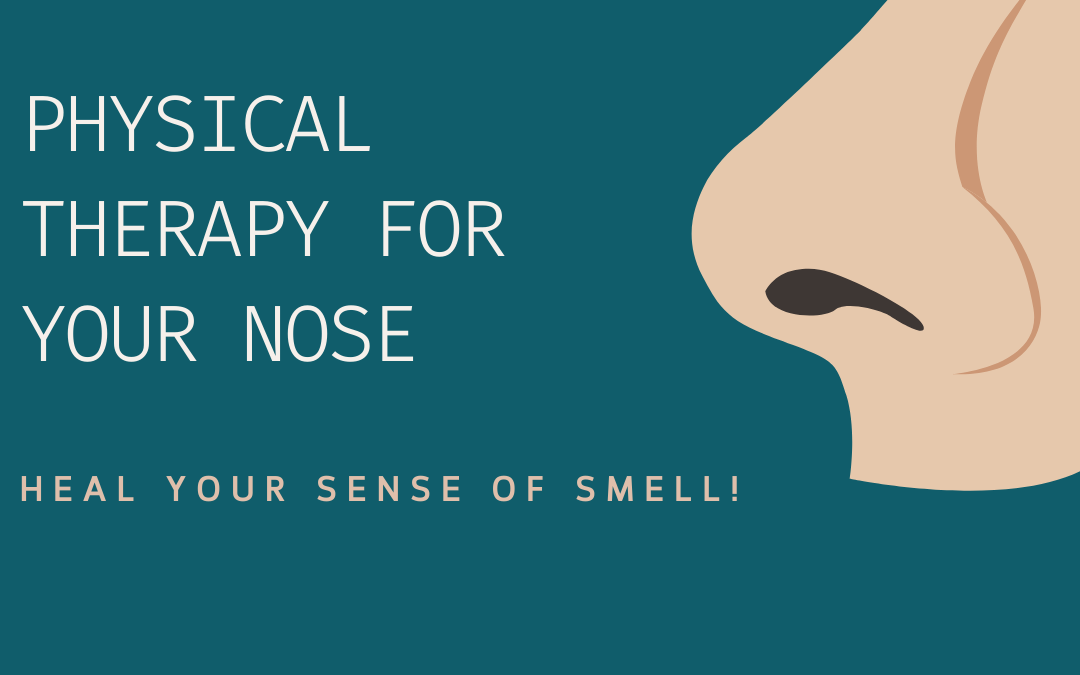
by Dr. Katherine | Mar 22, 2022 | Chiropractic, Health

Post viral loss or disruption of taste and smell has been a little ( a lot) more common than it used to be over the last two years! I have seen many of our patients at Desert Valley Chiropractic struggling with this. For anyone who has experienced this it is a really miserable and upsetting thing to deal with. Most people have been told to “give it time” many of which have given it months with very little improvement. However there ARE some proactive things you can do if you are struggling with the loss of your taste and smell! So this months biohack is: biohacking your smell and taste, recovery and healing from viral loss of taste and smell! You are not at the mercy of time and no answers, I am going to share with you what I have done myself as well as shared with my friends, family and our moon valley and Desert Valley Chiropractic community, to heal taste and smell issues.
- Physical Therapy for your Nose
Smell training!
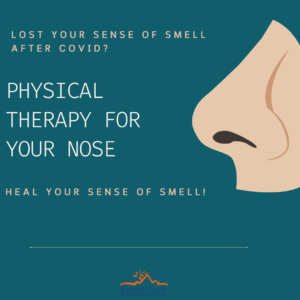
Yes, it is true we can do P.T. for the nose! Or at least the nerves that are in charge of taste and smell. Smell comes largely from the nervous system via the olfactory nerve, taste has a strong link to smell. This strong nervous system connection is part of what ties scents so strongly to memories and that is what we are going to work with to rehab your poor nose and sense of smell!
Pick four scents that have different scent profiles and that you KNOW you could recognize
I used cloves, coffee, lemon essential oil, and ylang ylang essential oil. I will provide a link to some good essential oils to choose from in our Fullscript dispensary.
Desert Valley Chiropractic patients click here to create your FullScript account
Gently smell each one and even if you get ZERO scent, which is how I was at first, imagine the scent, pretend you can smell it. Then move on to the next one until you have done this with all four scents. Keep practicing. I recommend not sniffing too deeply but more just gently smell like you would a flower or a perfume. Repeat this 3-4 times a day for 2-3 months or until your sense of smell and taste seems restored. You may notice your ability to smell certain scents comes in soon than the others. I could smell the cloves and coffee first. It also may come and go for a bit but gradually you should notice an overall improvement in being able to smell the four scents you have chosen as well as others.
A personal recommendation of mine would be to begin this when you are first diagnosed rather than to wait for the smell loss to occur. However even if your smell has been gone or disrupted for months this can still work for you!
Link to FullScript essential oils
2. Chiropractic
Getting adjusted is another great way to aid in whole body healing! By getting adjusted you are reducing inflammation around the nerve roots and restoring proper motion and function to the joints in your spine. When it comes to your taste and smell these nerve roots live in your upper spine and inside the skull. Getting specific adjustments done to the upper neck, the occiput ( back of the head) and sinuses help to reduce some of the inflammation in this area and may benefit your healing process. Our specific and gentle activator adjustments are great for this. One of my goals is to help as many families in our north Phoenix, Moon Valley and greater Phoenix area experience the difference a gentle activator adjustment can make! I found I got better results with my smell training on days when I was adjusted. Call the office at 602-439-1515 if you need to get an adjustment.
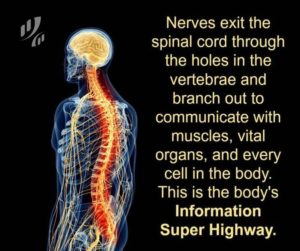
3. Zinc
Number three on our list is zinc! Zinc is an important mineral our body’s immune system uses to fight off viruses. A zinc deficiency can present with a loss of taste and smell as well as hair loss and hair thinning. During times of elevated stress, zinc is utilized at a much more rapid rate, increasing your dietary need for zinc.
The process of fighting off a particularly nasty virus can leave your body low in this important nutrient especially if you were a bit low or deficient in the first place. The benefits of zinc are vast. Zinc is involved in so many processes from modulating the immune system to supporting healthy hormone production. This is essential for the body to repair and heal. An imbalanced immune response is one of the number one causes of chronic inflammation. By helping to balance and stabilize the immune system, zinc also helps to drastically lower inflammation for many people. Chronic inflammation is one of the concerns in COVID recovery.
How do you test your zinc levels?
One of the simple and cost effective ways is the zinc sulfate taste test. All you do purchase a bottle of zinc tally, place a capful in your mouth, and observe the sensations in your mouth.
Below are the possible outcomes and indications:
You Notice No Metallic Taste: Zinc Deficiency
You Notice A Delayed Metallic Taste: Slight Zinc Deficiency
You Notice Slight Metallic Taste: Zinc Levels Are Adequate, But Could Be Higher
You Notice Very Strong Metallic Taste: You Likely Have Optimal Zinc Levels
When it comes to improving zinc levels in the body, supplementation is very helpful

The recommended daily allowance for zinc is between eight to eleven milligrams for most adults. However, for functional health most progressive nutritionists and doctors recommend between 20–40 mg/daily. You can use your results from the zinc sulfate test to determine how much supplemental zinc to consume. If you are experiencing an extreme loss of taste I still recommend trying this to see if you get results. If you feel the tally test is not working for you I recommend seeing a functional nutritional provider and getting a micronutrient panel ran.
For example, If your results indicate a slight or complete zinc deficiency, 40 mg daily is likely more suitable for you while 20 mg daily may be more suitable for someone who is trying to maintain optimal levels. Then test zinc levels on a weekly or monthly basis to see how you are improving. Again I recommend also working with a practitioner on this.
It is best to supplement with zinc with meals.
Click Here For Our Recovery Protocol on FullScript
We also carry high quality zinc supplements in the clinic.
4. Oil Pulling
Oil pulling is an ancient Ayurvedic dental treatment that apparently dates back about 3,000 years. It basically involves swishing a small amount of oil in your mouth for a short time, then spitting it out. The idea is that the oil pulls out bacteria and other toxins that hide within your mouth.
If the thought of swishing a tablespoon of oil for 20 minutes sounds difficult, take things slowly. For example, try a teaspoon instead and do it for only five minutes for the first few days. Then when you’re used to that, try a little more oil, or increase the duration. It is important to spit the oil out and not swallow it as you have used it to pull toxins from the mouth. I do this sometimes while I am putting on makeup or doing another activity where I don’t have to talk.
Oil pulling has been attributed to a number of benefits that include whiter teeth, healthier gums, clearer sinuses, stronger jaw, and a decrease in bad breath and gingivitis. I think it is helpful in the recovery of your taste and smell by reducing inflammation and toxins in the mouth and clearing the sinuses.
It’s important to keep in mind that oil pulling is not meant to replace regular dental hygiene.
5. Vitamin D
You know I LOVE vitamin D!! Test your vitamin D and work on getting your vitamin D levels to about 50. Vitamin D has shown ongoing benefits for protecting us against viruses and many other diseases.

The active form of Vitamin D plays a key role in maintaining immune balance and regulation. This is important for your body to heal. D3 is an immunomodulator targeting various immune cells. Several studies have linked inadequate vitamin D levels to a higher susceptibility of immune-mediated disorders including chronic infections and autoimmune diseases. My opinion is this will hold true for COVID healing as well so optimizing your vitamin D levels will be beneficial to post viral healing.
Getting a vitamin D test and looking at that actual number is a great place to start. Vitamin D is not part of a standard CBC but can easily be added by your doctor and often even self requested at some labs. I recommend always asking for it. You can also use an easy at home test like Omega Quant and do it yourself with a quick finger stick and mail it in with no additional lab fees. We are carrying these tests at the office, and we have all done them ourselves you can ask any of us questions about it! We also carry high quality vitamin D supplements at the clinic.
Click Here To Learn More About Vitamin D
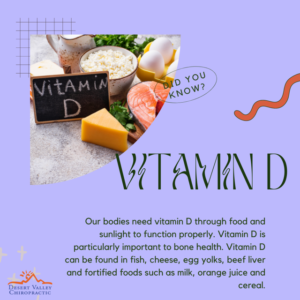
6. My favorite supplements for overall healing and repair MitoCore, Phytocore, and D Hist
Three of my favorite vitamins for general health and illness prevention as well as recovery after an illness are all by Orthomolecular. This is a high quality line of supplements only available through a doctors office. You can order them through our FullScript dispensary. They are Mitocore , phytocore and D-hist. I recommend these along with the vitamin D and zinc mentioned above.
Click Here For Our Recovery Protocol on FullScript
Mitocore:
- Recharges Cellular Energy Production
- Supports Immune Function
- Increases Antioxidant Protection
- Supports Detoxification Capacity
- Provides Key Micronutrients to Optimize Daily Nutritional Intake
Mitocore is an incredibly well rounded multi vitamin it includes:
Acetyl L-carnitine (ALC) an amino acid that is associated with increased energy production. It has been shown to increase the flow of free fatty acids, the fuel source for mitochondria, resulting in a significant boost in energy production. Studies have also shown that ALC supports the immune response by protecting CD4 and CD8 immune cells and by supporting the reproduction of lymphocytes for the identification and elimination of invading antigens.
N-acetyl cysteine (NAC) is an antioxidant that scavenges free radicals and promotes liver detoxification. NAC has been shown to increase production of glutathione, an important antioxidant found in the body. In addition to its antioxidant activity, glutathione boosts the immune system by activating T-cells, helping to maintain immune balance.
Alpha lipoic acid (ALA) is a potent antioxidant and also plays a synergistic role in recharging other antioxidants such as vitamin C, vitamin E, CoQ10 and glutathione. Lipoic acid also plays a key role in detoxification. Studies have shown that a combination of ALA and acetyl L-carnitine helps minimize oxidative damage. Oxidative stress causes damage to DNA, RNA, proteins, mitochondrial membranes, and lipids and contributes to the functional decline of mitochondria, cells, tissues, and eventually organs such as the brain.
To read more click here
https://www.orthomolecularproducts.com/product/mitocore
PhytoCore
- Boosts Liver Health
- Supports Phase I and II Liver Detoxification
- Increases the Body’s Production of Bile
- Supports Immune Balance in Hypersensitive Individuals
The human body is exposed to a wide variety of toxins on a daily basis. The liver is the body’s main detoxification organ, and provides enzyme systems that safely process and remove toxins. The specialized blend of nutrients in PhytoCore has been shown to support Phase I and II liver detoxification and boost liver health which is important in detoxification and healing.
To read more click here
https://www.orthomolecularproducts.com/product/phytocore
Natural D-Hist
- Supports Immune Balance in Hypersensitive Individuals
- Supports Sinus and Respiratory Health
- Promotes Normal Viscosity of Mucus
- Clears Nasal Passages
Natural D-Hist® is a targeted blend of flavonoids, antioxidants, proteolytic enzymes and botanicals designed to provide comprehensive support for seasonal challenges caused by common environmental allergens. The formula includes quercetin, bromelain, stinging nettles leaf, and N-acetyl cysteine. The powerful combination actively promotes healthy nasal and sinus passages for individuals with elevated histamine and respiratory irritation.

















 GMO refers to an organism or food product that has been genetically modified. In other words, it did not develop naturally. When a food claims non-GMO status, they are basically saying they didn’t use ingredients that were genetically modified and it doesn’t come from livestock that have been fed genetically modified foods. The
GMO refers to an organism or food product that has been genetically modified. In other words, it did not develop naturally. When a food claims non-GMO status, they are basically saying they didn’t use ingredients that were genetically modified and it doesn’t come from livestock that have been fed genetically modified foods. The 
 Since you can’t be sure non-GMO foods are always organic, it’s a much safer bet to shop organic. Then you can be reasonably certain that most of your organic foods will also be free of GMOs as well. Look for the USDA Certified Organic label it is a little green-and-white label stating USDA Organic. When shopping, that’s the label you should look for. Moral of the story? Yes, organic usually means non-GMO. But be careful, because non-GMO does not always mean organic. Shop wisely.
Since you can’t be sure non-GMO foods are always organic, it’s a much safer bet to shop organic. Then you can be reasonably certain that most of your organic foods will also be free of GMOs as well. Look for the USDA Certified Organic label it is a little green-and-white label stating USDA Organic. When shopping, that’s the label you should look for. Moral of the story? Yes, organic usually means non-GMO. But be careful, because non-GMO does not always mean organic. Shop wisely.


















